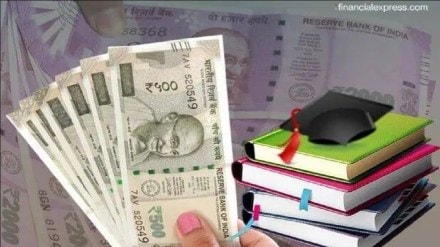President Joe Biden’s student loan forgiveness plan has finally seen the light of the day as the White House officially launched the debt cancellation programme on Monday. The programme is said to waive off federal debt worth $10,000 for students with incomes below $125,000 a year, or households that make less than $250,000 a year. Students who get federal Pell Grants, a subsidy by the U.S. government, are eligible for an additional $10,000 relief. The move, which is said to benefit around 20 million American middle class borrowers, appears to be gaining traction in India. “A similar initiative in India can help ease the burden of lakhs of students and parents who are reeling under the pressure of repayment of education loans. However, the burden should not be shifted on to the educational institutes,” Raj Singh, vice chancellor, JAIN Deemed-to-be-University, said.
According to the Reserve Bank of India (RBI), the student debt in India amounts to Rs 1,45,785 crore as of August 26, 2022. Students who rely on education loans to access education face heavy pressure to repay their loans in absence of job security and high interest rates. The annual interest on education loans in India ranges between 7.30% and 16%, with additional processing fee. “While it’s true that higher education in India is considerably more expensive for some courses than the US, a loan waver such as America is difficult to implement in India given its diversity and market size,” Prashant A Bhonsle, founder, CEO, Kuhoo Fintech opined. He added that the government could instead focus on generating more employment to enable students to repay the loans without difficulty.
Interestingly, the rate of Non-Performing Assets (NPA) or bad loans in public sector banks alone have increased in the recent years following the Covid outbreak which led to job and income loss. As a result, the number of education loans disbursed in India has reduced by nearly 25%. This means banks have put shutters down for students seeking loans above a certain amount without collateral or security due to the fear of non repayment. “This rules out the chance of the financially less privileged students to opt for higher education and discourages them to pursue education,” Nirmalya Samanta, Associate Professor, Delhi University, said.
Even as the central government had offered a moratorium on loan repayments to borrowers during the pandemic and continues to run several schemes and initiatives such as Credit Guarantee Fund Scheme for Education Loans (CGFSEL), which allows students to avail loan without any collateral security and third-party guarantee for a maximum loan limit of Rs. 7.5 lakh, a student loan forgiveness plan like America is argued to give major relief to students, as per some industry experts.
Also Read: Sanchiconnect partners with IIM Lucknow to expedite tech startups funding in India
Follow us on Twitter, Facebook, LinkedIn
